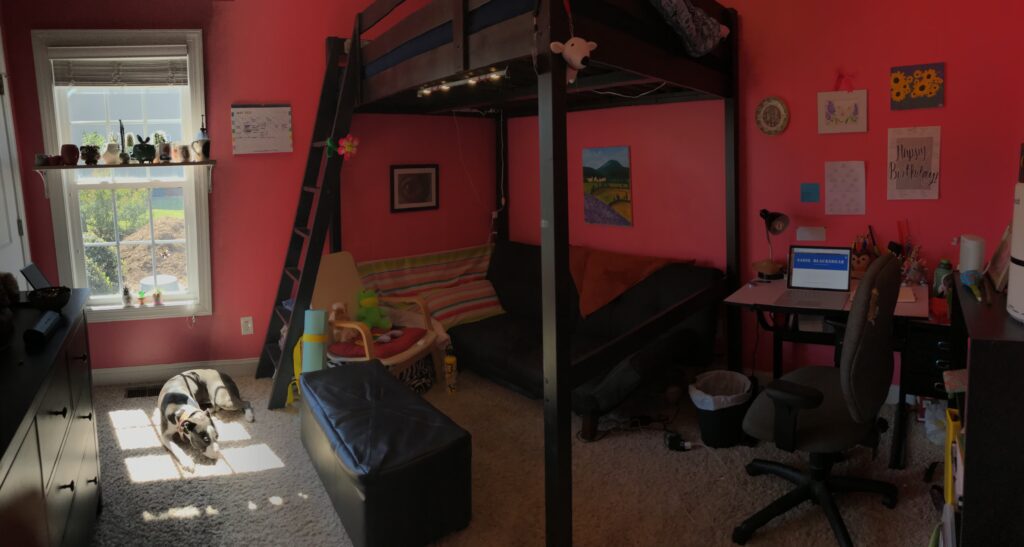My final research paper, titled “Pink, Blue, and You: An Investigation into the Effects of Forcing Gender-Coded Colors and the Binary System onto Children,” is attached and available for download below.
Tangential
Pink and blue represent an interesting intersection between my portfolio and my living environment.
Blue, in this case, is my portfolio’s main accent color: PANTONE Classic Blue 19-4052 (more on that in Something Hue). Dr. Munger taught us in her section that blue is the most popular favorite color across Western society. This statistic is what made me start thinking about the implications behind blue, and its common counterpart pink, and led me to research what I did in my paper. Oddly enough, the statistic was upheld by the responses I got from my peers about their favorite colors in my Something New Collaborative. Blue had twice as many submissions than any other color in the rainbow.
On the other hand, pink is what I’ve been surrounded by since being sent home from Davidson due to COVID-19.

This paper has made me reflect on my own relationship with pink through the years. As a young girl, I was very actively pro-pink. In 2008, when we moved out of an apartment and into the house that we currently live, I grew very excited because I knew that I could finally paint my bedroom walls. I decided my “theme” would be bright pink, black furniture, and zebra print accents (you can see the ghost of the zebra print element under my chair, I still have a beanbag). A year later, we got around to redoing the room and I was SO excited about it. However, as I grew to be 12 and then 13 years old, pink seemed like a bad thing. I had virtually no pink clothing and I desperately wanted to redo my room. Reflecting on this now, I feel that this sentiment was rooted in a desire to “not be like other girls,” which ultimately boils down to internalized misogyny. I wouldn’t let myself be associated with the color because I believed that I wasn’t unique if I indulged myself in something as inherently girly as pink seemed to be. It took a few years to grow out of that thought and realize just how twisted the thought process was, but I stand (write?) before you once more as an actively pro-pink person.
